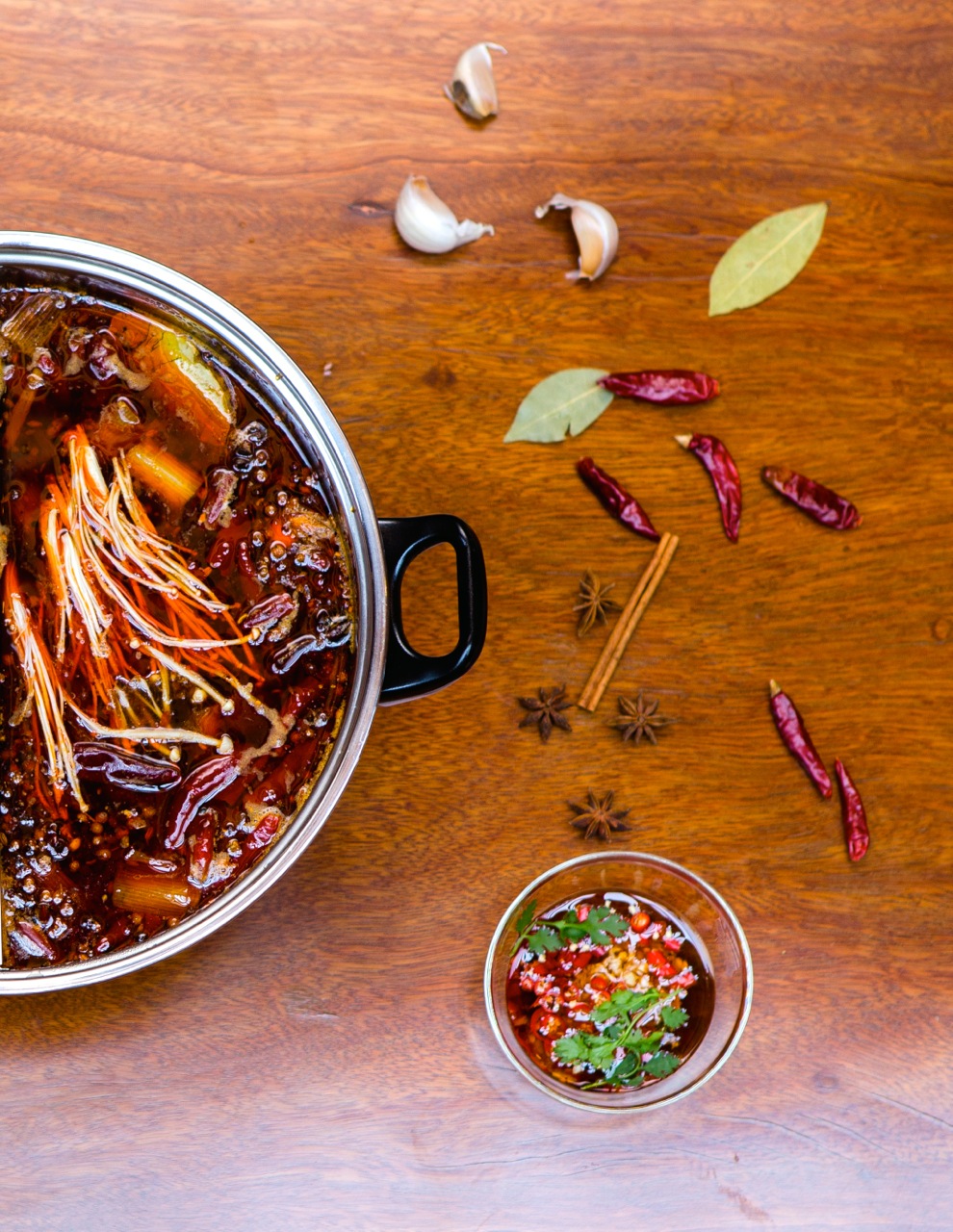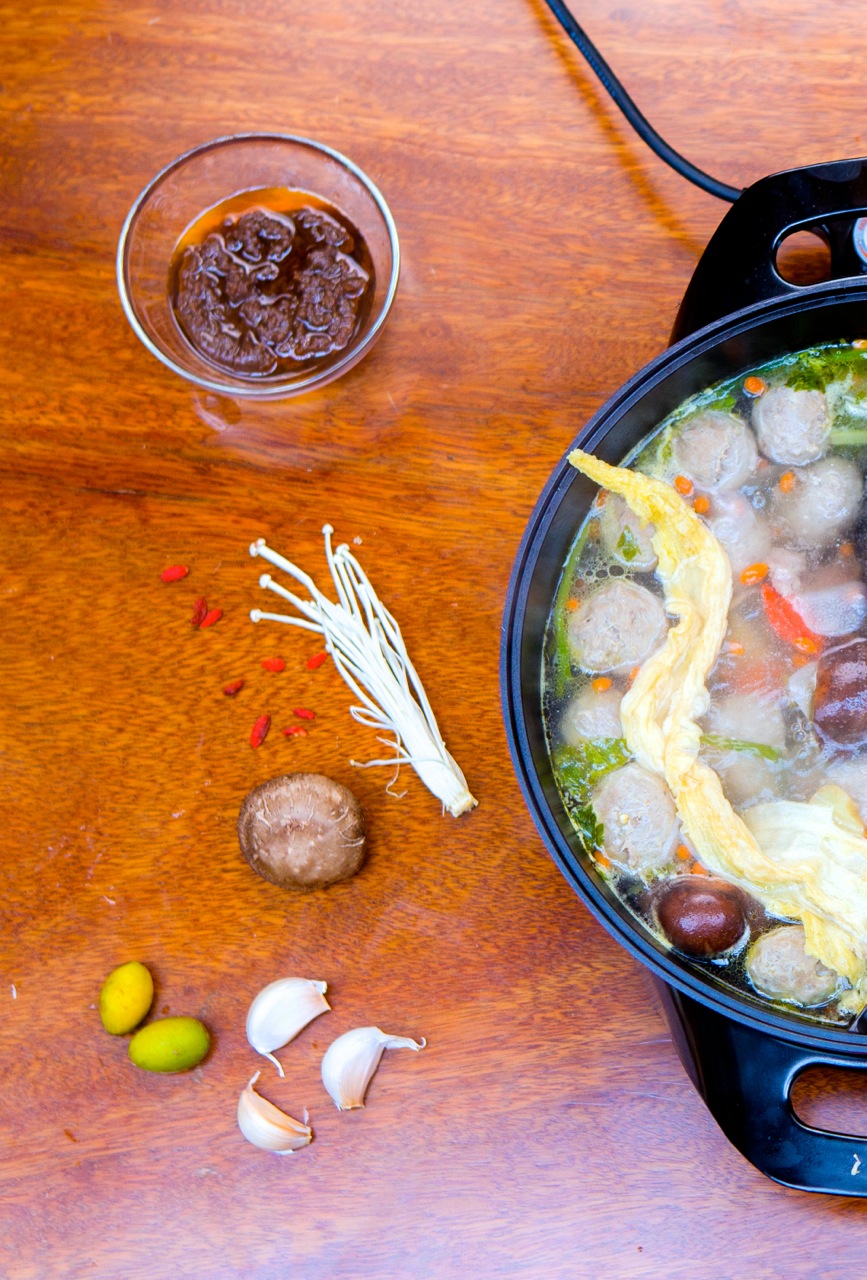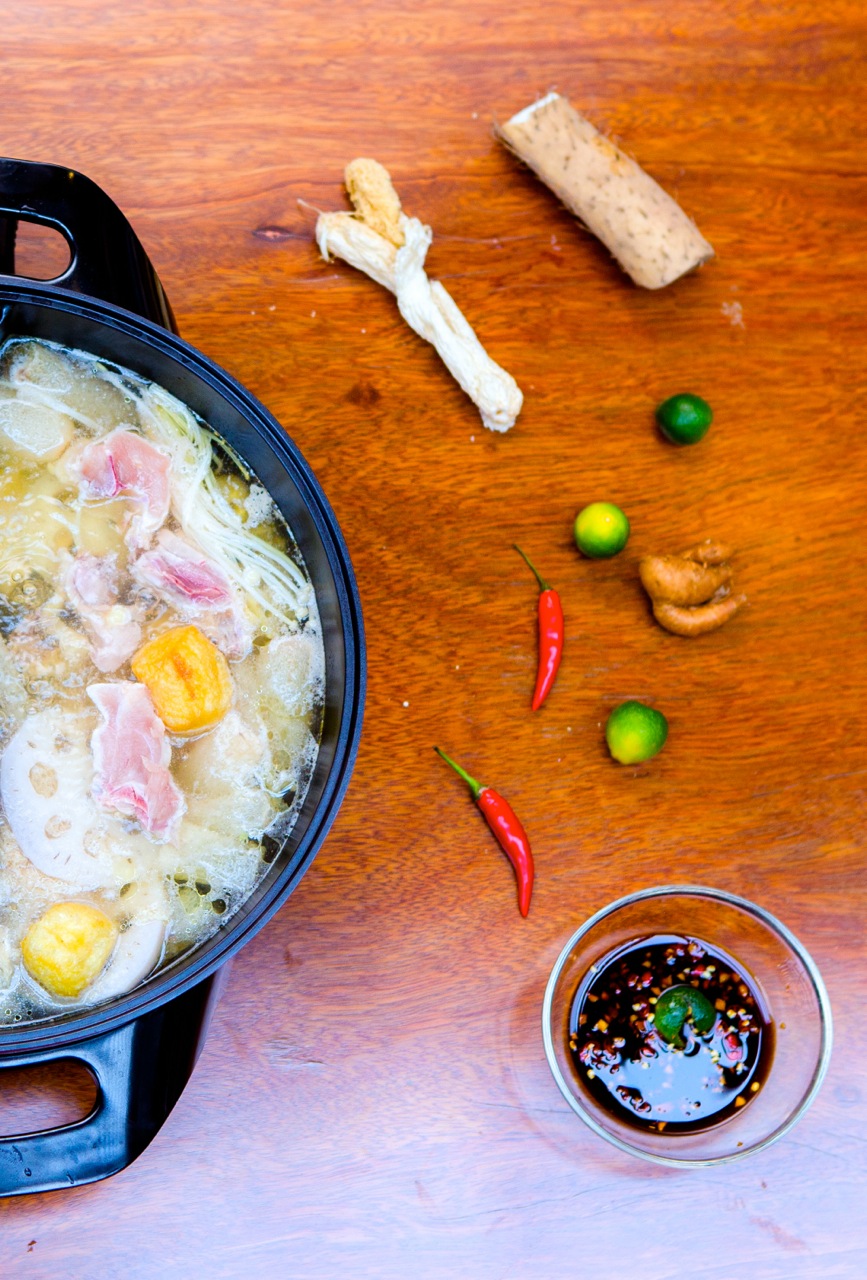4 Classic Hot Pots to Cook at Home

Hot pot: the one Chinese food all foreigners can agree to love. This month, we’re introducing four classic varieties and sharing a few cooking tips so you can partake in some steamy DIY action at home this winter.
Beijing Mutton
 Ah, old Beijing mutton: northern China’s soothing, food-baby-inducing hot pot. The broth is generally clear and seasoned with sheep bone stock, but you can get by with store-bought bone broth (in the hot pot aisle) or chicken stock and some shallots, ginger, mushrooms, Chinese red dates and goji berries in boiled water.
Ah, old Beijing mutton: northern China’s soothing, food-baby-inducing hot pot. The broth is generally clear and seasoned with sheep bone stock, but you can get by with store-bought bone broth (in the hot pot aisle) or chicken stock and some shallots, ginger, mushrooms, Chinese red dates and goji berries in boiled water.
The quality of the lamb will make or break this dish – look for prime cuts of finely sliced lamb sourced from northern China (anything from Xinjiang or Inner Mongolia should do the trick). You can find pre-sliced, frozen meat for hot pot in most Chinese supermarkets.
In terms of ingredients to dip, Beijing mutton is probably one of the more forgiving broths. Feel free to toss in greens like spinach or bok choy, beef, daikon, tofu, winter melon, noodles and vermicelli. As a general rule, meat, tofu and root vegetables are cooked first and leafy greens last to preserve the flavor of the broth.
For your dipping sauce, combine sesame paste, scallions, minced garlic, sliced red chili peppers (to taste), coriander and a touch of soy sauce.
Ambitious cooks shop here: any supermarket, wet market or at a local butcher to find high-quality lamb and bone broth.
Lazy foodies eat here: true foodies would fly to Beijing to taste the real thing, but if they had to eat in the PRD, they’d go to Old Beijing Mutton Hot Pot in Guangzhou or Leyan Lao Beijing Tong Hot Pot in Shenzhen.
Spicy Sichuan
 Numbing peppercorns? Excruciatingly hot chilies? Yes please. Sichuan – or Chongqing – hot pot is easily number one in our hearts, and it’s a good thing too, because the broth is damn difficult to make.
Numbing peppercorns? Excruciatingly hot chilies? Yes please. Sichuan – or Chongqing – hot pot is easily number one in our hearts, and it’s a good thing too, because the broth is damn difficult to make.
Start by frying four cloves of garlic in peanut oil (you can do this directly in your hot pot) and then add dried chili peppers, a spoonful of Sichuan peppercorns (四川花椒), large scallions, Sichuan bean paste (四川豆酱), star anise, fennel seeds, a piece of rock sugar, ginger and salt. Add in filtered water gradually and, if the mixture isn’t as potent as you’d like, toss in half a pack of pre-made Sichuan hot pot mix, which generally contains soy sauce, bean paste, animal fat and spices. Once your broth is bubbling nicely, consider adding another spoonful of Sichuan chili powder and salt to taste.
As with Beijing mutton, you can pretty much dip whatever you want into Sichuan hot pot without affecting the overall flavor of the broth.
For a dipping sauce, use sesame oil (not paste), minced garlic, chopped coriander, scallions and chili peppers. A pinch of MSG and salt will elevate your dip to niubi status.
Ambitious cooks shop here: wet markets and Aeon’s spice and hot pot aisles.
Lazy foodies eat here: Sifang Jiuge Chongqing Hot Pot in Guangzhou, Chongqing Yuwei Xiaoyu Hot Pot (featured in the documentary A Bite of China) in Shenzhen.
Chaoshan Beef
 Chaoshan, an area in southeastern Guangdong, is famous for its characteristic beef hot pot that became popular in the 1940s for its freshness and farm-to-table beef. A rich shacha dipping sauce – made of shrimp, brill, garlic and soybean oil – is also a key element in the meal.
Chaoshan, an area in southeastern Guangdong, is famous for its characteristic beef hot pot that became popular in the 1940s for its freshness and farm-to-table beef. A rich shacha dipping sauce – made of shrimp, brill, garlic and soybean oil – is also a key element in the meal.
The texture of meat from various parts of a cow tastes significantly different, so head to your local butcher to see if you can get your hands on some chuck steak, which covers the area from the neck to the ribs and is considered to be the best for hot pot.
On top of fresh, thinly sliced beef, meatballs are another irreplaceable element of classic Chaoshan hot pot. Beef balls produced in this area are made by striking the meat into a fine paste using a club and then shaping the paste by hand. Traditionally, only a few types of vegetables are consumed alongside, including daikon, lettuce and corn.
While some prefer pure water for the broth to taste the original flavor of beef, others like to spice it up by adding cloves of garlic and chopped scallion.
Ambitious cooks shop here: Tiyu Xi Hengjie in Tianhe District or other wet markets. You can purchase shacha dipping sauce (沙茶酱) at any supermarket – look for the brand ‘Bullhead.’
Lazy foodies eat here: Huangniu Hotpot in Guangzhou, Yuan Niu Dao in Shenzhen.
Coconut Chicken
 Though not a classic variety of hot pot by strict mainland standards, coconut chicken is delicious any time of the year and is enjoyed all the way from China’s southernmost tip to the northern city of Harbin.
Though not a classic variety of hot pot by strict mainland standards, coconut chicken is delicious any time of the year and is enjoyed all the way from China’s southernmost tip to the northern city of Harbin.
What makes the broth so popular is, of course, coconut water, which gives a sweet, juicy taste to anything you toss into the pot.
To make the broth, we recommend you fill the pot with an equal amount of filtered water and coconut water, several slices of coconut meat and bony chicken cuts.
Popular ingredients to cook inside include Chinese cabbage, squid balls, bamboo fungus (竹笙), enokitake (a type of mushroom), Chinese yams, tofu sheets, lotus root and water chestnuts.
Don’t skimp on your dipping sauce – great coconut chicken hot pot relies on a peppy side sauce, which you can make yourself using diced scallions, ‘facing heaven pepper’ (指天椒), mashed galangal (沙姜), soy bean sauce, chopped red chilies, crushed peanuts and lime. You can also add coriander and garlic to your liking.
Ambitious cooks shop here:any wet market – just ask for Hainan or Wenchang chicken.
Lazy foodies eat here: Fengyuan Yezhen Coconut Chicken Restaurant in Guangzhou, Runyuan Siji Coconut Chicken in Shenzhen.
You can buy a hot pot at your local supermarket or on baopals.com (try Super, Joyoung or Midea brands) for RMB100-200. Spicy and plain mixes for broth are also available at most supermarkets, just ask for huoguo di liao ‘火锅底料.’
Finally, if you want to enjoy hot pot at home but are too lazy to make it yourself, order in! Authentic Chaoshan Beef Hot Pot, available on Mazing app, delivers a pot, ingredients and broth to your door and picks everything up the next day, saving you valuable time and a greasy cleanup job.
With contributions by Tristin Zhang, photos by Claire Zheng.
Get the weekly newsletter!
Sign up to get the entertainment, lifestyle and event news from Urban Family every week!Classified Posts
News























